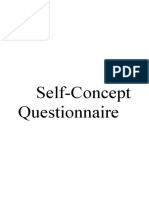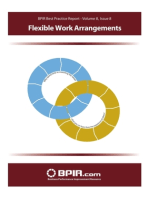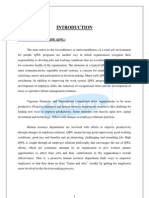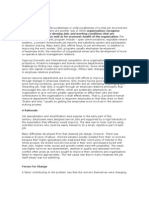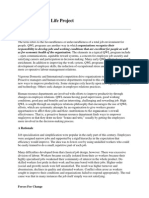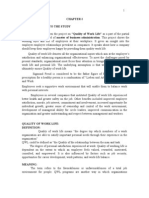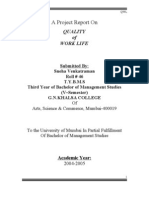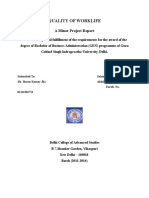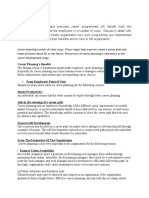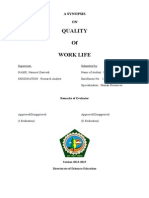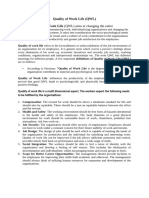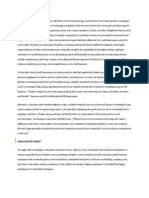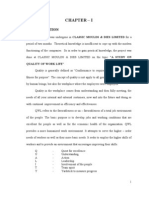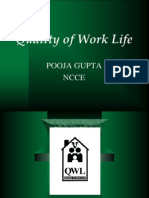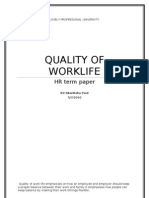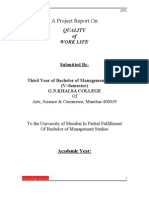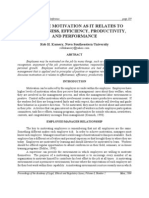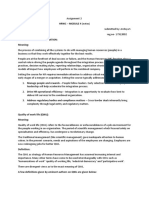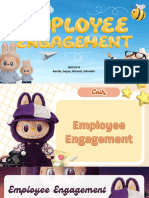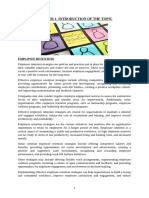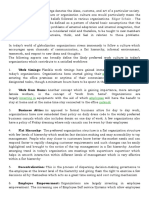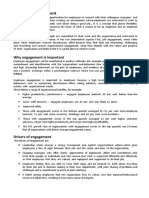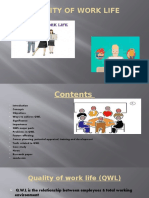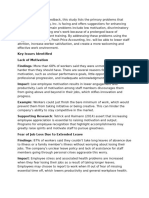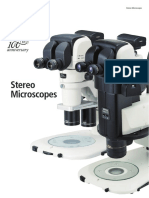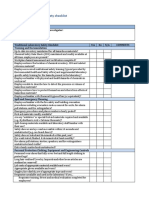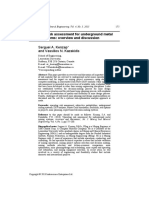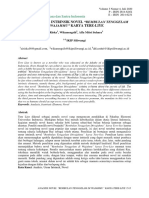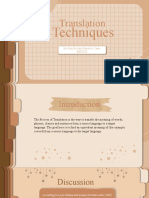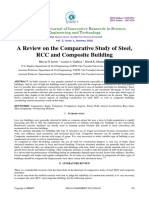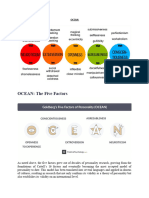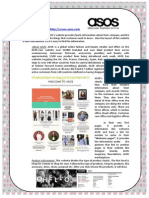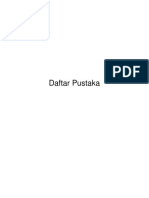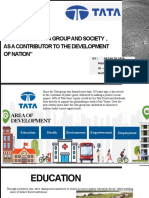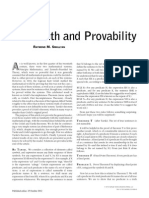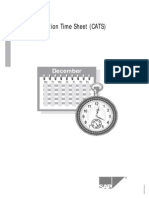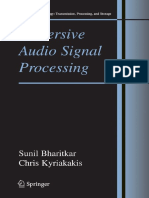Their Responsibility To Develop Jobs and Working Conditions That Are Excellent For People As Well As For Economic Health of The Organisation. The
Their Responsibility To Develop Jobs and Working Conditions That Are Excellent For People As Well As For Economic Health of The Organisation. The
Uploaded by
Lakshmi RamanCopyright:
Available Formats
Their Responsibility To Develop Jobs and Working Conditions That Are Excellent For People As Well As For Economic Health of The Organisation. The
Their Responsibility To Develop Jobs and Working Conditions That Are Excellent For People As Well As For Economic Health of The Organisation. The
Uploaded by
Lakshmi RamanOriginal Title
Copyright
Available Formats
Share this document
Did you find this document useful?
Is this content inappropriate?
Copyright:
Available Formats
Their Responsibility To Develop Jobs and Working Conditions That Are Excellent For People As Well As For Economic Health of The Organisation. The
Their Responsibility To Develop Jobs and Working Conditions That Are Excellent For People As Well As For Economic Health of The Organisation. The
Uploaded by
Lakshmi RamanCopyright:
Available Formats
The term refers to the favourableness or unfavourableness of a total job environment for people.
QWL programs are another way in which organisations recognise their responsibility to develop jobs and working conditions that are excellent for people as well as for economic health of the organisation. The elements in a typical QWL program include open communications, equitable reward systems, a concern for employee job security and satisfying careers and participation in decision making. Many early QWL efforts focus on job enrichment. In addition to improving the work system, QWL programs usually emphasise development of employee skills, the reduction of occupational stress and the development of more co-operative labour-management relations. Vigorous Domestic and International competition drive organisations to be more productive. Proactive managers and human resource departments respond to this challenge by finding new ways to improve productivity. Some strategies rely heavily upon new capital investment and technology. Others seek changes in employee relations practices. Human resource departments are involved with efforts to improve productivity through changes in employee relations. QWL means having good supervision, good working conditions, good pay and benefits and an interesting, challenging and rewarding job. High QWL is sought through an employee relations philosophy that encourages the use of QWL efforts, which are systematic attempts by an organisation to give workers greater opportunities to affect their jobs and their contributions to the organisations overall effectiveness. That is, a proactive human resource department finds ways to empower employees so that they draw on their brains and wits, usually by getting the employees more involved in the decisionmaking process. A Rationale Job specialisation and simplification were popular in the early part of this century. Employees were assigned narrow jobs and supported by a rigid hierarchy in the expectation that efficiency would improve. The idea was to lower cost by using unskilled workers who could be easily trained to do a small, repetitive part of each job. Many difficulties developed from that classical job design, however. There was excessive division of labour. Workers became socially isolated from their co-workers because their highly specialised jobs weakened their community of interest in the whole product. De-skilled workers lost pride in their work and became bored with their jobs. Higher-order (social and growth) needs were left unsatisfied. The result was higher turnover and absenteeism, declines in quality and alienated workers. Conflict often arose as workers sought to improve their conditions and organisations failed to respond appropriately. The real cause was that in many instances the job itself simply was not satisfying. Forces For Change A factor contributing to the problem was that the workers themselves were changing. They became educated, more affluent (partly because of the effectiveness of classical job design), and more independent. They began reaching for higher-order needs, something more than merely earning their bread. Employers now had two
reasons for re-designing jobs and organisations for a better QWL: Classical design originally gave inadequate attention to human needs. The needs and aspirations of workers themselves were changing. Humanised Work Through QWL One option was to re-design jobs to have the attributes desired by people, and redesign organisations to have the environment desired by the people. This approach seeks to improve QWL. There is a need to give workers more of a challenge, more of a whole task, more opportunity to use their ideas. Close attention to QWL provides a more humanised work environment.It attempts to serve the higher-order needs of workers as well as their more basic needs. It seeks to employ the higher skills of workers and to provide an environment that encourages them to improve their skills. The idea is that human resources should be developed and not simply used. Further, the work should not have excessively negative conditions. It should not put workers under undue stress. It should not damage or degrade their humanness. It should not be threatening or unduly dangerous. Finally, it should contribute to, or at least leave unimpaired, workers abilities to perform in other life roles, such as citizen, spouse and parent. That is, work should contribute to general social advancement. Job Enlargement vs. Job Enrichment The modern interest in quality of work life was stimulated through efforts to change the scope of peoples jobs in attempting to motivate them. Job scope has two dimensions breadth and depth. Job breadth is the number of different tasks an individual is directly responsible for. It ranges from very narrow (one task performed repetitively) to wide (several tasks). Employees with narrow job breadth were sometimes given a wider variety of duties in order to reduce their monotony; this process is called job enlargement. In order to perform these additional duties, employees spend less time on each duty. Another approach to changing job breadth is job rotation, which involves periodic assignment of an employee to completely different sets of job activities. Job rotation is an effective way to develop multiple skills in employees, which benefits the organisation while creating greater job interest and career options for the employee. Job enrichment takes a different approach by adding additional motivators to a job to make it more rewarding. It was developed by Frederick Herzberg on the basis of his studies indicating that the most effective way to motivate workers was by focusing on higher-order needs. Job enrichment seeks to add depth to a job by giving workers more control, responsibility and discretion over hoe their job is performed. The difference between enlargement and enrichment is illustrated in the figure on the next page.
QWL can be define as "The quality of relationship between employees and the total working environment. QWL is a process by which an organization responds to employee needs for developing mechanisms to allow them to share fully in making the decisions that design their lives at work. QWL programs can be evaluated on the basis of following points: a. Fair compensation and job security: The economic interests of people drive them to work at a job and employee satisfaction depends at least partially , on the compensation offered. Pay should be fixed on the basis of the work done, responsibilities undertaken, individual skills , performance and accomplishments. Job security is another factor that is of concern to employees. Permanent employment provides security to the employees and improves their QWL. b. Health is wealth: Organizations should realize that their true wealth lies in their employees and so providing a healthy work environment for employees should be their primary objective. c. Provide personal and career growth opportunities: An organization should provide employees with opportunities for personal/professional development and growth and to prepare them to accept responsibilities at higher levels. d. Participative management style and recognition: Flat organizational structures help organizations facilitate employee participation . A participative management style improves the quality of work life. Workers feel that they have control over their work processes and they also offer innovative ideas to improve them. Recognition also helps to motivate employees to perform better. Recognition can be in the form of rewarding employees for jobs well done. e. Work-life balance: Organizations should provide relaxation time for the employees and offer tips to balance their personal and professional lives. They should not strain employees personal and social life by forcing on them demanding working hours,overtime work, business travel, untimely transfers etc. f. Fun at workplace: This is growing trend adopted by todays organizations to make their offices a fun place to work. The aim of QWL is to identify and implement alternative programs to improve the quality of professional as well as personal life of an organizations employees. had done a project on Quality of work life earlier. I am sending the questionaire. Hope it will be useful for you. 1. How do you rate the medical reimbursement scheme provided by company? a) Excellent b) Good c) Satisfactory d) Unsatisfactory 2. How do you rate the transport facilities provided by the company? a) Excellent b) Good c) Satisfactory d) Unsatisfactory 3. How do you rate safety measures adopted by the company? a) Excellent b) Good c) Satisfactory d) Unsatisfactory 4. The wage policies adopted by the company are, a) Excellent b) Good c) Satisfactory d) Unsatisfactory 5. The Organization gives you freedom to use your skills in your area of job. a) Strongly Agree b) Agree c) Neutral d) Disagree e) Strongly Disagree 6. The management gives you recognition for good results achieved a) Strongly Agree b)Agree c) Neutral d) Disagree e)Strongly Disagree 7. How do you rate the suggestion scheme implemented by the company? a) Strongly Agree b)Agree c) Neutral d)Disagree e)Strongly Disagree
8. The Promotional policy in the company is, a) Excellent b)Good c)Satisfactory d) Unsatisfactory 9. The work timings of the organization are, a) Excellent b)Good c)Satisfactory d)Unsatisfactory 10.The motivation given at the work place by the supervisors/Senior Authority is, a) Excellent b)Good c)Satisfactory d) Unsatisfactory 11.The relation with my immediate superior is, a) Excellent b) Good c) Satisfactory d) Unsatisfactory 12.The relation with my sub-ordinates is, a) Excellent b)Good c)Satisfactory d) Unsatisfactory 13.The company communicates the every new change that takes place. a) Strongly Agree b) Agree c) Disagree d) Strongly Disagree 14.The feedback given to us about the work done by the supervisors is, a) Motivating b)Demotivating c) Humiliating 15.The training provided in the company is, a) Excellent b) Good c) Average d) poor 16.The procedure followed for Job Rotation is, a) Excellent b) Good c) Average d) poor 17.The training programs should be conducted more extensively, a) Strongly Agree b) Agree c) Disagree d) Strongly Disagree 18.The Welfare activities provided are, a) Excellent b) Good c) Average d)poor 19.The job utilizes most of my skills and abilities, a) Strongly Agree b) Agree c) Disagree d) Strongly Disagree 20.I am ready to take additional responsibilities with my job, a) Agree b) Disagree 21.The work environment is, a) Excellent b) Good c) Average d) poor 22.The job is Satisfactory, a) Agree b) Strongly Agree c) Disagree d) Strongly Disagree
You might also like
- Practical (SCQ)Document7 pagesPractical (SCQ)Tanya Ravichandran80% (5)
- CRAAP Test WorksheetDocument1 pageCRAAP Test WorksheetJacquelineNo ratings yet
- Quality of Work LifeDocument47 pagesQuality of Work LifeAsim MahatoNo ratings yet
- QWL at SamsungDocument100 pagesQWL at SamsungSubha BharathyNo ratings yet
- QualityDocument2 pagesQualityShan SenaniNo ratings yet
- HRD QWLDocument2 pagesHRD QWLVaibhav PatilNo ratings yet
- Chapter-I 1. Introduction To The Study I Have Undertaken The Project On "Quality of Work Life" As A Part of The PartialDocument46 pagesChapter-I 1. Introduction To The Study I Have Undertaken The Project On "Quality of Work Life" As A Part of The PartialSivarama KrishnanNo ratings yet
- Quality of Work LifeDocument99 pagesQuality of Work Lifefelix777sNo ratings yet
- QWL SnehaDocument103 pagesQWL SnehaRajasekaran SelvamNo ratings yet
- 3 ChapterDocument29 pages3 ChapterSahil GouthamNo ratings yet
- Quality of WorklifeDocument47 pagesQuality of WorklifeAkhil DevraniNo ratings yet
- Quality of Work Life PDF ReportDocument9 pagesQuality of Work Life PDF ReportbhavanadevimeNo ratings yet
- Assignment HR - 9 OD InterventionsDocument6 pagesAssignment HR - 9 OD InterventionsDeborina BhattacharyyaNo ratings yet
- Barani Institute of Information and Technology: Psychology PresentationDocument17 pagesBarani Institute of Information and Technology: Psychology PresentationMuddasar YaminNo ratings yet
- Assignment II Career ManagementDocument8 pagesAssignment II Career ManagementEunice NyakairuNo ratings yet
- MohanDocument31 pagesMohanMukesh kannan MahiNo ratings yet
- Quality of Work LifeDocument16 pagesQuality of Work Lifesimply_coool100% (3)
- Work LifeDocument70 pagesWork LifeAnaghaPuranikNo ratings yet
- Quality of Work Life: A Synopsis ONDocument20 pagesQuality of Work Life: A Synopsis ONPawandeep SinghNo ratings yet
- Quality of Work LifeDocument5 pagesQuality of Work LifeNigel RebelloNo ratings yet
- CASE STUDY ANS (1) Employee Motivation Is The Level of Energy, Commitment, and Creativity That A Company'sDocument8 pagesCASE STUDY ANS (1) Employee Motivation Is The Level of Energy, Commitment, and Creativity That A Company'skajal_sharma6200No ratings yet
- MBA+Project Quality+of+Work+Life (1) .Document60 pagesMBA+Project Quality+of+Work+Life (1) .Divya Ram100% (1)
- Chapter-10 C-Quality of Work LifeDocument17 pagesChapter-10 C-Quality of Work LifeJoginder GrewalNo ratings yet
- Job Design AssignDocument6 pagesJob Design AssignimrannwlNo ratings yet
- HR Term Paper 2003Document40 pagesHR Term Paper 200327mickieNo ratings yet
- Job Design AssignDocument7 pagesJob Design AssignJacob OnsareNo ratings yet
- Employee RelationsDocument15 pagesEmployee Relationskareena shahNo ratings yet
- Employee MotivationDocument3 pagesEmployee MotivationAngie Stamatiou100% (2)
- Quality of Work LifeDocument99 pagesQuality of Work LifeBharat Ahuja100% (2)
- Quality of Worklife in Malayala ManoramaDocument127 pagesQuality of Worklife in Malayala ManoramaKarthik Ak100% (2)
- Case StudyDocument27 pagesCase Studypushpender gargNo ratings yet
- Benefits of AttritionDocument21 pagesBenefits of AttritionRajan KashyapNo ratings yet
- SHRM Assignment - 4: Submitted by - Diksha Yadav Roll Number - 03512303918Document10 pagesSHRM Assignment - 4: Submitted by - Diksha Yadav Roll Number - 03512303918Diksha YadvNo ratings yet
- Employee MotivationDocument6 pagesEmployee MotivationMelissa MarshallNo ratings yet
- 06 Chapter 02 PDFDocument85 pages06 Chapter 02 PDFJemila SatchiNo ratings yet
- Human Resources Management UNIT 29Document9 pagesHuman Resources Management UNIT 29tjnihalNo ratings yet
- HRWC Module 4 NotesDocument18 pagesHRWC Module 4 Notesarsh iyahNo ratings yet
- Quality of Work Life and Employee Engagement Management EssayDocument9 pagesQuality of Work Life and Employee Engagement Management EssayNisreen Al-shareNo ratings yet
- EMPLOYEE ENGAGEMENTDocument39 pagesEMPLOYEE ENGAGEMENTShane Mary DomasigNo ratings yet
- HRD MatrixDocument7 pagesHRD MatrixChhavi GargNo ratings yet
- HRSS em Involvement and RelasDocument6 pagesHRSS em Involvement and RelasRadhzz RajiNo ratings yet
- EMPLOYEE RETENTION (Project Report)Document49 pagesEMPLOYEE RETENTION (Project Report)ravijoshi1010No ratings yet
- Eork CultureDocument5 pagesEork CultureDivya IyyengarNo ratings yet
- Employee Engagement SHRM NotesDocument6 pagesEmployee Engagement SHRM NotesShahbaz Khan100% (1)
- Quality of Work Life With Special Reference To NTPC - 2011Document77 pagesQuality of Work Life With Special Reference To NTPC - 2011Varsha Shishodia0% (1)
- Employee Involvement: (Research Paper)Document10 pagesEmployee Involvement: (Research Paper)archangelkhel100% (1)
- A Study On Quality of Work Life: Key Elements & It's ImplicationsDocument4 pagesA Study On Quality of Work Life: Key Elements & It's ImplicationsAbirami DjNo ratings yet
- Abstract.: Key Words: Quality of Work Life, Job Satisfaction and Work EnvironmentDocument6 pagesAbstract.: Key Words: Quality of Work Life, Job Satisfaction and Work EnvironmentPadmasunNo ratings yet
- Quality of Work Life Final Pptankita BarkhaDocument28 pagesQuality of Work Life Final Pptankita BarkhadollyguptaNo ratings yet
- HR ConsultatationDocument6 pagesHR ConsultatationLoc LeNo ratings yet
- Saran YaDocument7 pagesSaran YakumananmbaNo ratings yet
- HRM PaperDocument6 pagesHRM PaperDivyanjali SinghNo ratings yet
- Essentials of Management - 1st SemDocument8 pagesEssentials of Management - 1st SemParichay PalNo ratings yet
- Business Research ReportDocument22 pagesBusiness Research ReportSidra AshrafNo ratings yet
- Understanding Employee Engagement.: Checklist 245Document7 pagesUnderstanding Employee Engagement.: Checklist 245Emdad YusufNo ratings yet
- Synopsis Report On Quality of Work LifeDocument5 pagesSynopsis Report On Quality of Work LifeManisha MishraNo ratings yet
- Managing Others: The Organisational Essentials: Your guide to getting it rightFrom EverandManaging Others: The Organisational Essentials: Your guide to getting it rightNo ratings yet
- Examining Career Development within Learning Organisations: Career Development Book Series, #4From EverandExamining Career Development within Learning Organisations: Career Development Book Series, #4No ratings yet
- Purpose, Productivity, and Profit through Project ManagementFrom EverandPurpose, Productivity, and Profit through Project ManagementNo ratings yet
- Section 11 - Project Management System - MDocument9 pagesSection 11 - Project Management System - MarunghandwalNo ratings yet
- Stereo Microscopes 2CE ENAH 3Document32 pagesStereo Microscopes 2CE ENAH 3Adriana IsazaNo ratings yet
- AQA GCSE Chemistry AnswersDocument14 pagesAQA GCSE Chemistry AnswersErvin MetushiNo ratings yet
- Table F 1 Traditional Laboratory Safety ChecklistDocument5 pagesTable F 1 Traditional Laboratory Safety ChecklistBenhar IribaniNo ratings yet
- SASA211: Finding The CenterDocument138 pagesSASA211: Finding The CenterLeyksNo ratings yet
- Introduction DippenaarDocument43 pagesIntroduction DippenaarJB HIFINo ratings yet
- Operating Risk Assessment For Underground Metal Mining Systems - Overview and DiscussionDocument26 pagesOperating Risk Assessment For Underground Metal Mining Systems - Overview and DiscussionIonut Patras100% (1)
- Analisis Rembulan Tenggelam Di WajahmuDocument8 pagesAnalisis Rembulan Tenggelam Di WajahmuSelviana IlhamNo ratings yet
- Translation TechniquesDocument22 pagesTranslation TechniquesJohn Richard IsaacNo ratings yet
- What Is ResearchDocument6 pagesWhat Is ResearchIsagani Socrates Loreto100% (1)
- A Review On The Comparative Study of Steel, RCC and Composite BuildingDocument12 pagesA Review On The Comparative Study of Steel, RCC and Composite Buildingdivyashree sureshNo ratings yet
- Identifying The Orders of AR and MA Terms in An ARIMA ModelDocument11 pagesIdentifying The Orders of AR and MA Terms in An ARIMA ModelNeha GillNo ratings yet
- BIG 5 PERSONALITY TRAITS - OceanDocument5 pagesBIG 5 PERSONALITY TRAITS - Oceannandani.harripersadNo ratings yet
- The EFQM Excellence Model in ActionDocument40 pagesThe EFQM Excellence Model in Actionsheref_hamady50% (4)
- E Business Website: A Case Study of ASOSDocument4 pagesE Business Website: A Case Study of ASOSPatty NutnichaNo ratings yet
- Model ImpDocument3 pagesModel ImpjeevaNo ratings yet
- B Daftar PustakaDocument11 pagesB Daftar PustakasultantraNo ratings yet
- Analysis of Tata Group and Society, As A Contributor To The Development of NationDocument7 pagesAnalysis of Tata Group and Society, As A Contributor To The Development of NationPrashant MahawarNo ratings yet
- D8B Old Board BIOS SettingsDocument6 pagesD8B Old Board BIOS SettingsJackie Salerno PerkinsNo ratings yet
- Pre Placement Talk:: What Is PPT?Document7 pagesPre Placement Talk:: What Is PPT?MohanNo ratings yet
- Particle-Based Viscoelastic Fluid SimulationDocument11 pagesParticle-Based Viscoelastic Fluid SimulationSilvia KwekNo ratings yet
- Truth and ProvabilityDocument4 pagesTruth and ProvabilityTrefoilia KnotNo ratings yet
- Cross Application Time Sheet (CATS) R/3 System: Mo Tu We TH FR Sa SuDocument19 pagesCross Application Time Sheet (CATS) R/3 System: Mo Tu We TH FR Sa SuSrinivasa Rao MullapudiNo ratings yet
- Potential of Rainwater Harvesting in SomaliaDocument110 pagesPotential of Rainwater Harvesting in SomaliaGreen Action Sustainable Technology GroupNo ratings yet
- Immersive Audio Signal ProcessingDocument222 pagesImmersive Audio Signal Processingderghal100% (2)
- Youth Leadership Summit: HON. Manuel PalarcaDocument7 pagesYouth Leadership Summit: HON. Manuel PalarcaCamilo GarciaNo ratings yet
- Orgnisational Study: Nirani Sugars LTDDocument12 pagesOrgnisational Study: Nirani Sugars LTDuranand_angadiNo ratings yet
- Classroom Assessment Handouts Edu 405Document89 pagesClassroom Assessment Handouts Edu 405Gohar YaseenNo ratings yet
